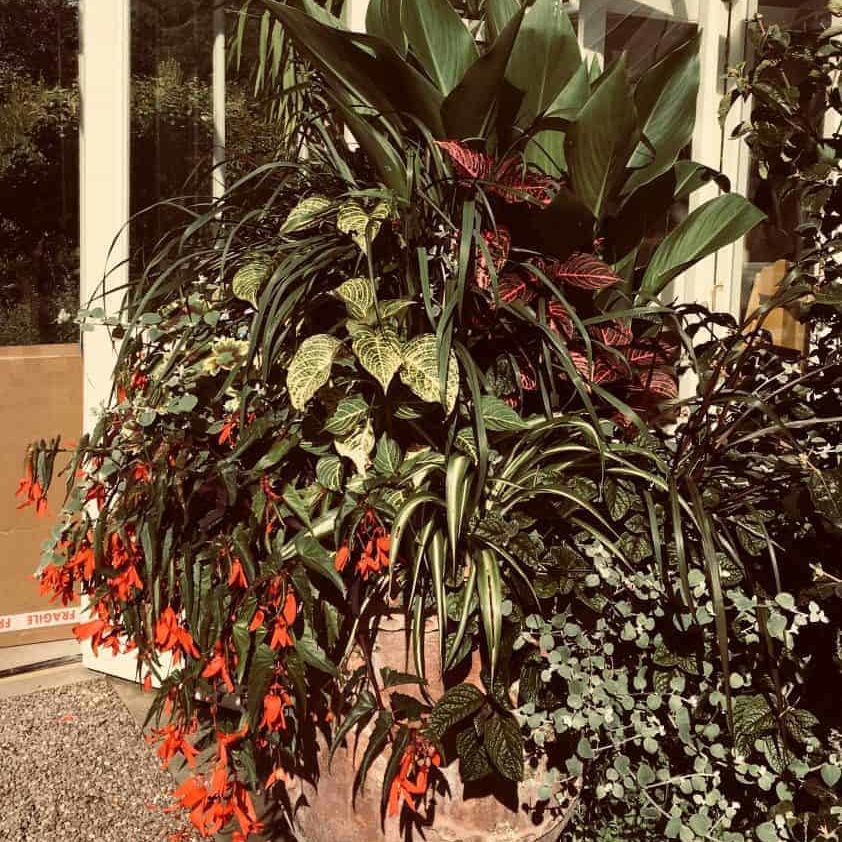When we think of herbs, we tend to think of how to use them in the kitchen. Gardening with them is often limited to sticking some in a plant pot by the back door.
The truth is that herbs offer a lot more to the garden than simply a living larder. Without doubt, their subtle or zingy flavours bring meals to life, but what about incorporating herbal elements holistically in our outdoor spaces? Find them the right conditions – in terms of soil, sunlight and moisture – and they’ll add ornamentation as attractive as any other plant.
Hedging
We’ve discussed alternatives to box (Buxus sempervirens) hedging in a previous article, but a number of herbs work wonderfully as low hedges. Rosemary (Rosmarinus officinalis) will put up with more regular, tight trimming and is evergreen. It needs freer draining soil as it’s of Mediterranean origin. Lavender (Lavandula) also requires lighter, drier soils. It forms a less neat hedge as trimming should be restricted to late summer or early autumn, after flowering. Never cut into old wood – this rarely re-grows. Another bushy little hedging herb is sage (Salvia officinalis). You can find a variety of colours and even blend them in your rows: green, purple, golden or the variegated ‘Tricolor’.
Edging
Some herbs work well to edge paths and beds – a sort of hedging, but much less coherent. Chives (Allium schoenoprasum) give an upright, verdant edge to walkways. These develop pretty soft purple flowers in summer which are perfect for pollinators too. For softer edging, trailing rosemary (Rosmarinus officinalis Prostrate Group) will send as many stems out and down edges as upwards.
Creepers
Similarly to the prostrate rosemary, other herbs like to creep along and work excellently as ground cover between other things. Different types of thyme (Thymus) can be planted, as can varieties of oregano or marjoram (Origanum vulgare) or chamomile (Chamaemelum nobile). While the last is lime green in leaf and white in flower, the others come in a range of hues from green to gold and silver-white. Try using their forms and scents by planting amongst paving, cobbles or gravel too. They really soften paths and seating areas.
Statement pieces
The towering herbs mark a stark contrast to the low spreaders just described. Weave these into the middle and back of borders and beds to add height variation. One such popular herb is fennel (Foeniculum vulgare), and the bronze variety is especially striking. Their feathery foliage also contrasts well with other, sturdier leaves. Celery-scented lovage (Levisticum officinale) and species of angelica work well as statement pieces too. Angelica archangelica is a vivid green and can reach great heights of 2m or more. A. gigas is from East Asia and hits you with its fulsome purple colouring instead. Both have globular umbels of flowers, beloved by bees and hoverflies.
Dark and sultry
If the idea of Angelica gigas’ purple columns has you excited, consider some other dark-leaved herbs too. Red and purple basils (Ocimum basilicum ‘Purpurascens’) add depth when woven into planting at the front of a sunny border. Red orach (Atriplex hortensis) grows taller but also requires warm weather to thrive. In reality it’s more of a vegetable than a herb – people ate its leaves before spinach grew in popularity.
The sharpness of mint
Tangy mints (Mentha) are worthwhile for use in cooking, cocktails and infusions, but you’ll experience their real sharpness if planted out in the ground. These are an invasive genus of plant who’ll spring up further and further from their original spot. Restrict them by planting in a container; even then we wouldn’t trust them to play by the rules. These thugs could ruin your carefully planned planting scheme in just two years. Best to confine them to appealing pots worked into your design.
Kevin Gelder
Kevin joined Bestall & Co in late 2017 and brought a range of skills with him from a varied background. He gained a degree in French and Italian from Lancaster University in 2009 before successfully completing a PGCE at the University of Sheffield in 2011. He built on his communication skills through secondary language teaching, before working in healthcare administration.
Ultimately though it was his passion for plants and gardening which brought him to Bestall & Co as a member of the planting team, and although he's now moved back to an office based role, the articles he wrote whilst he was still with us live on.



